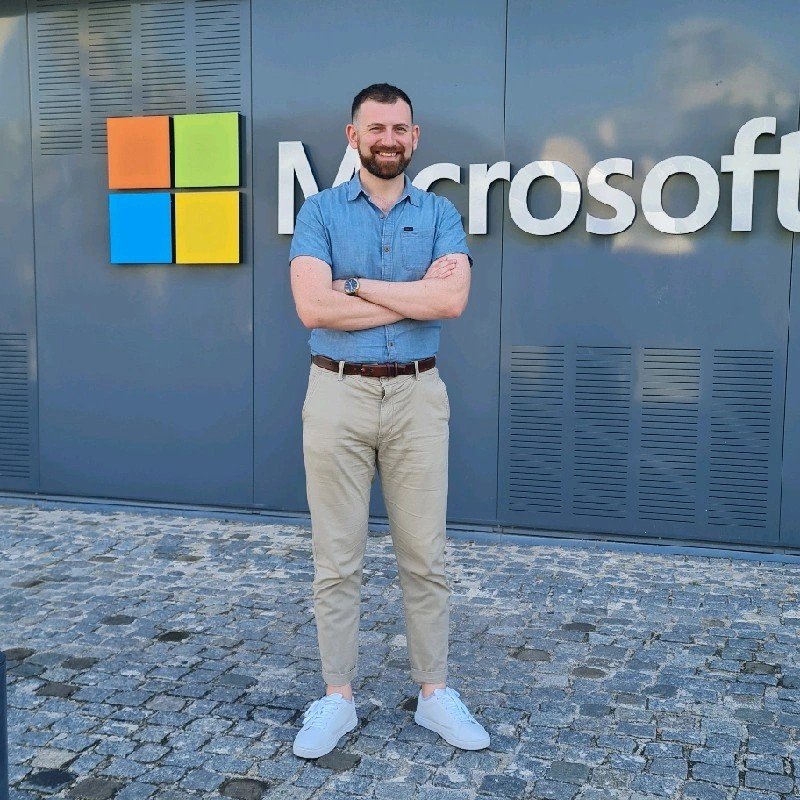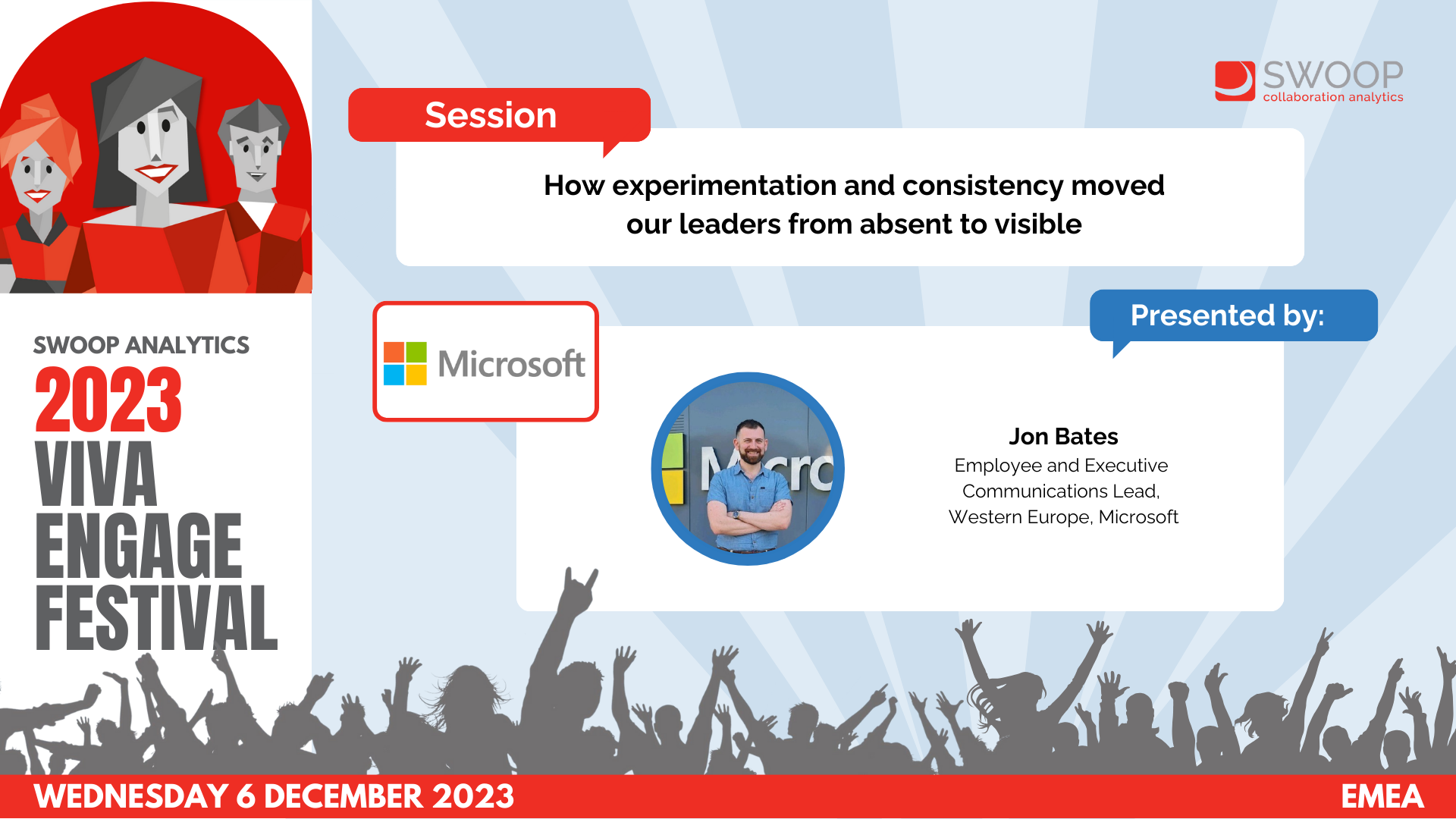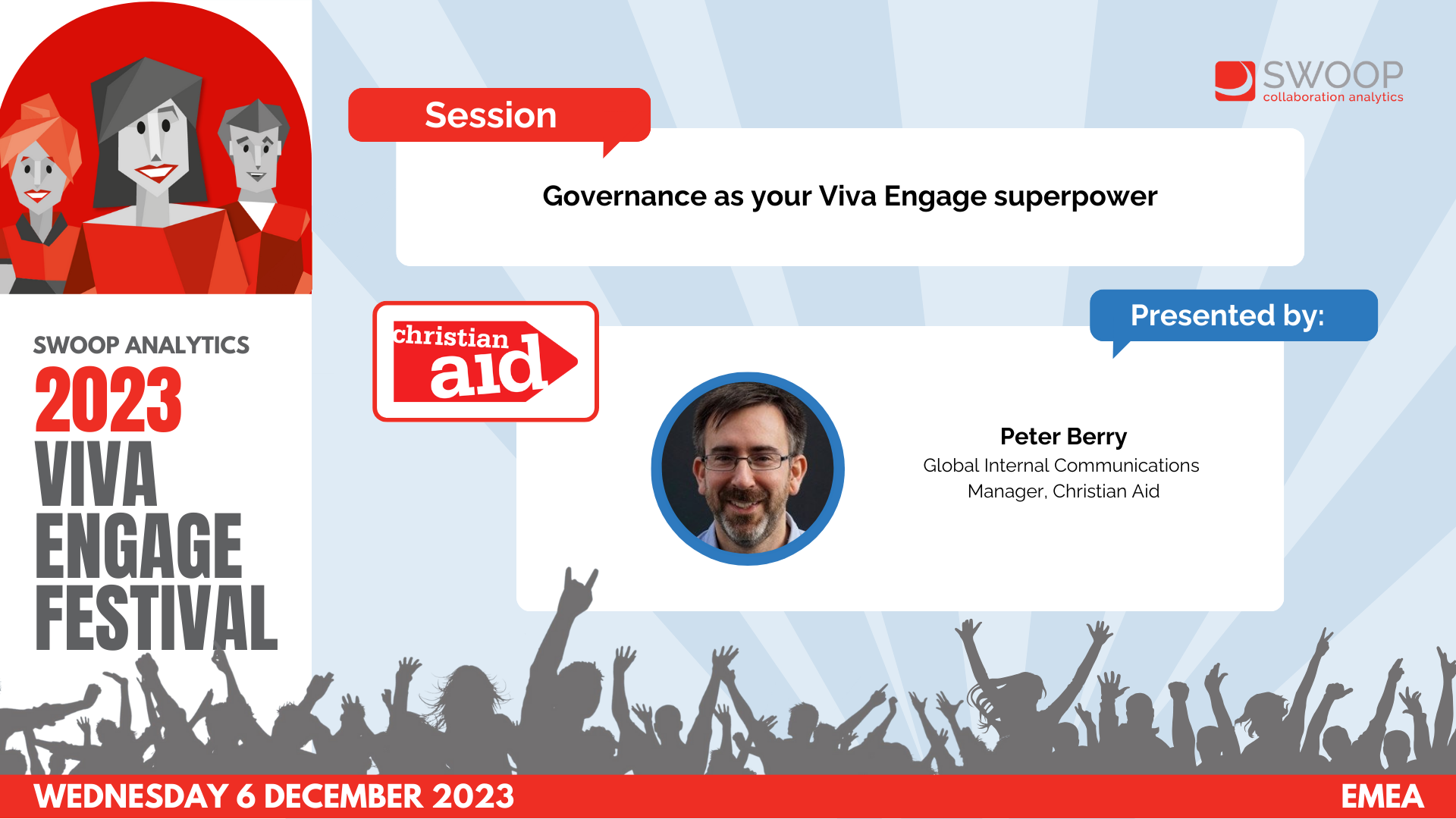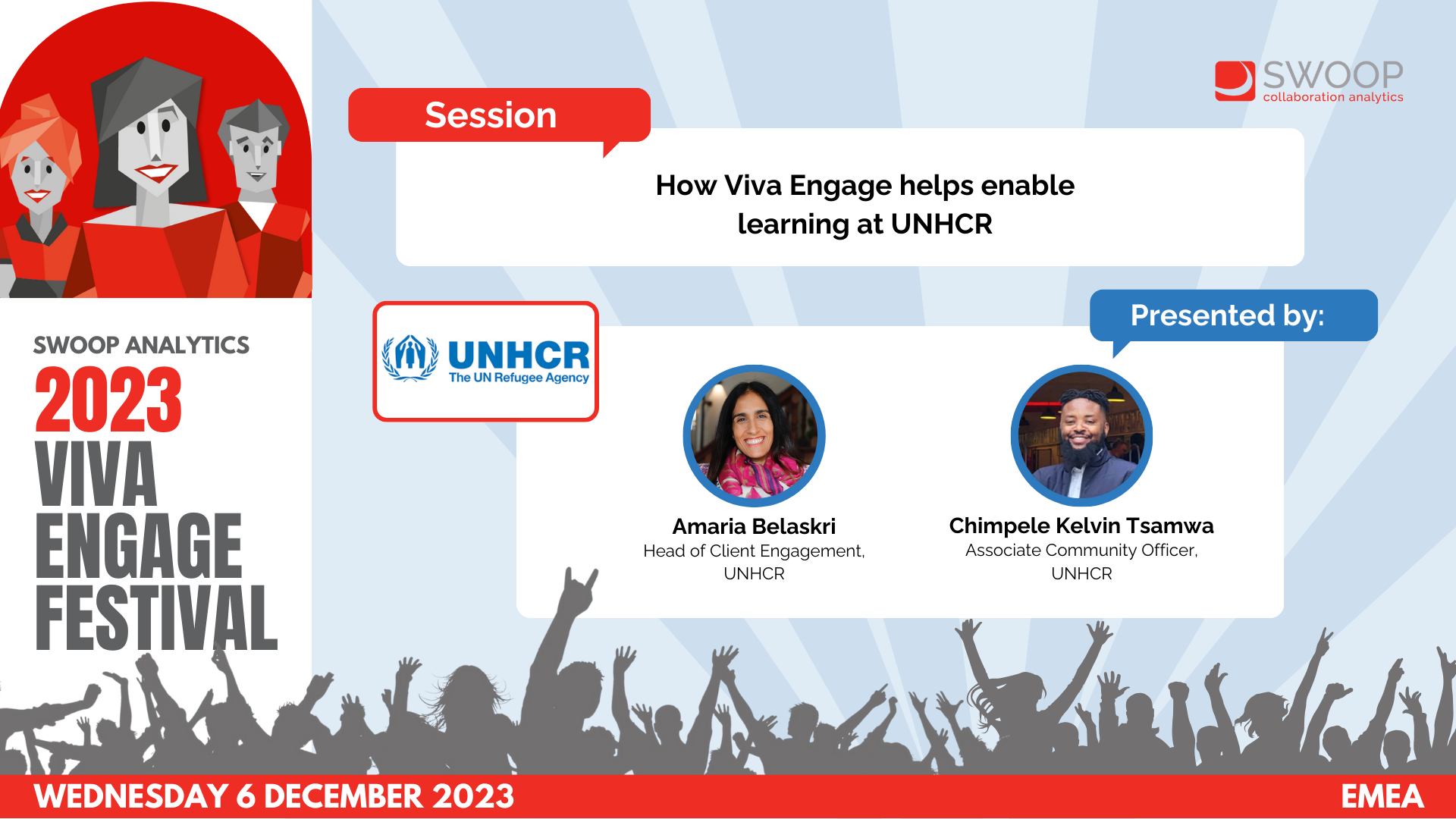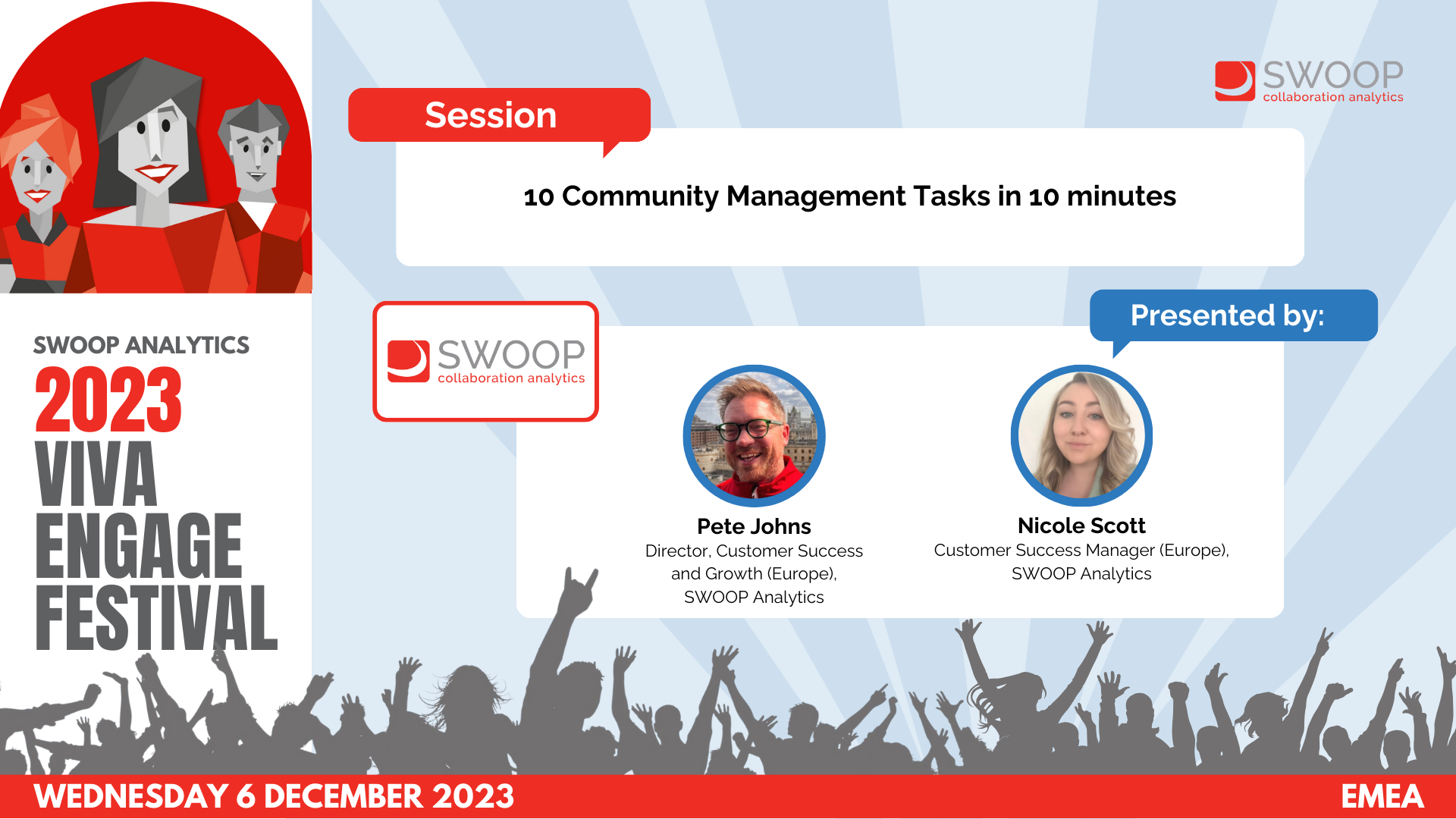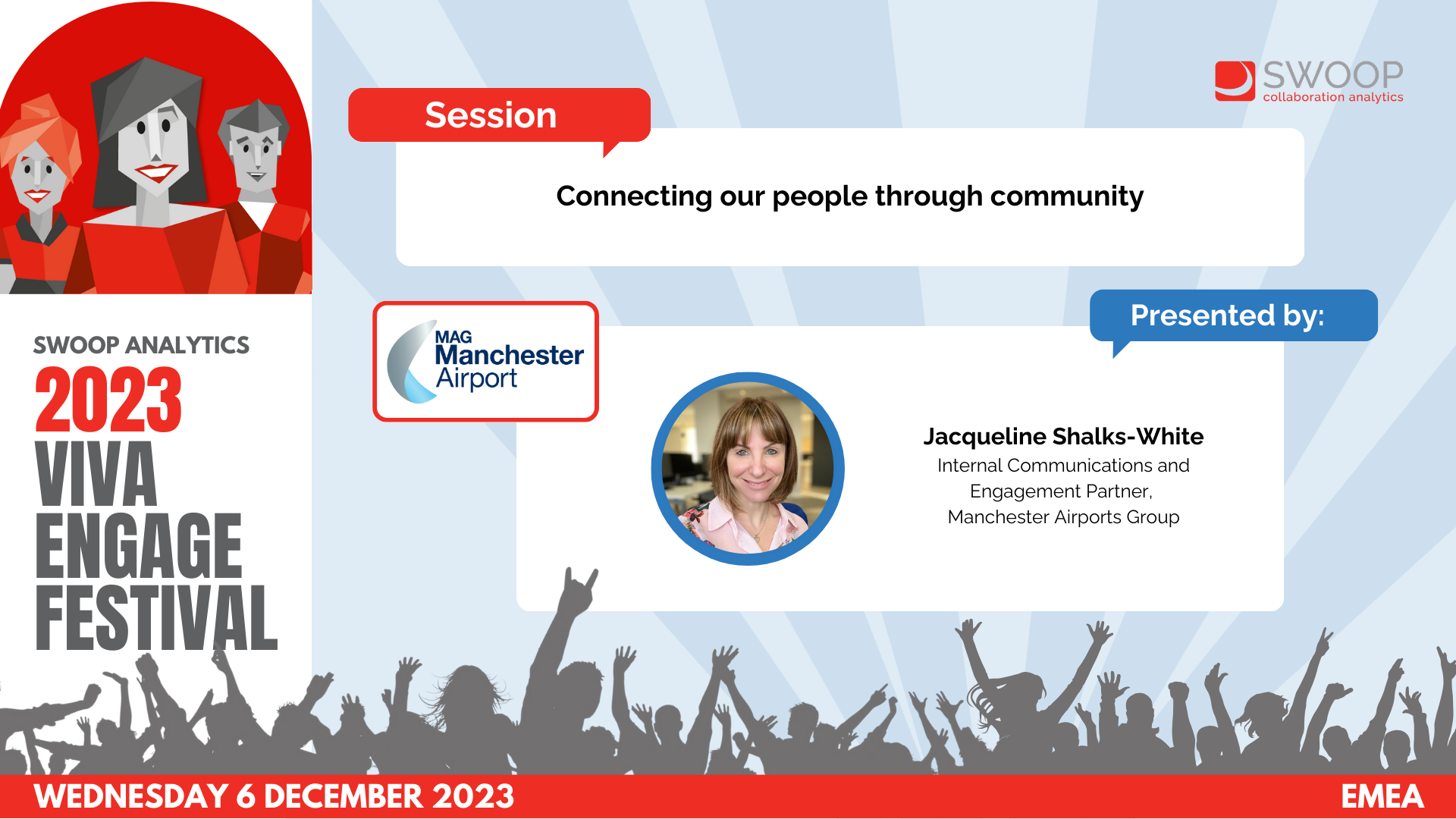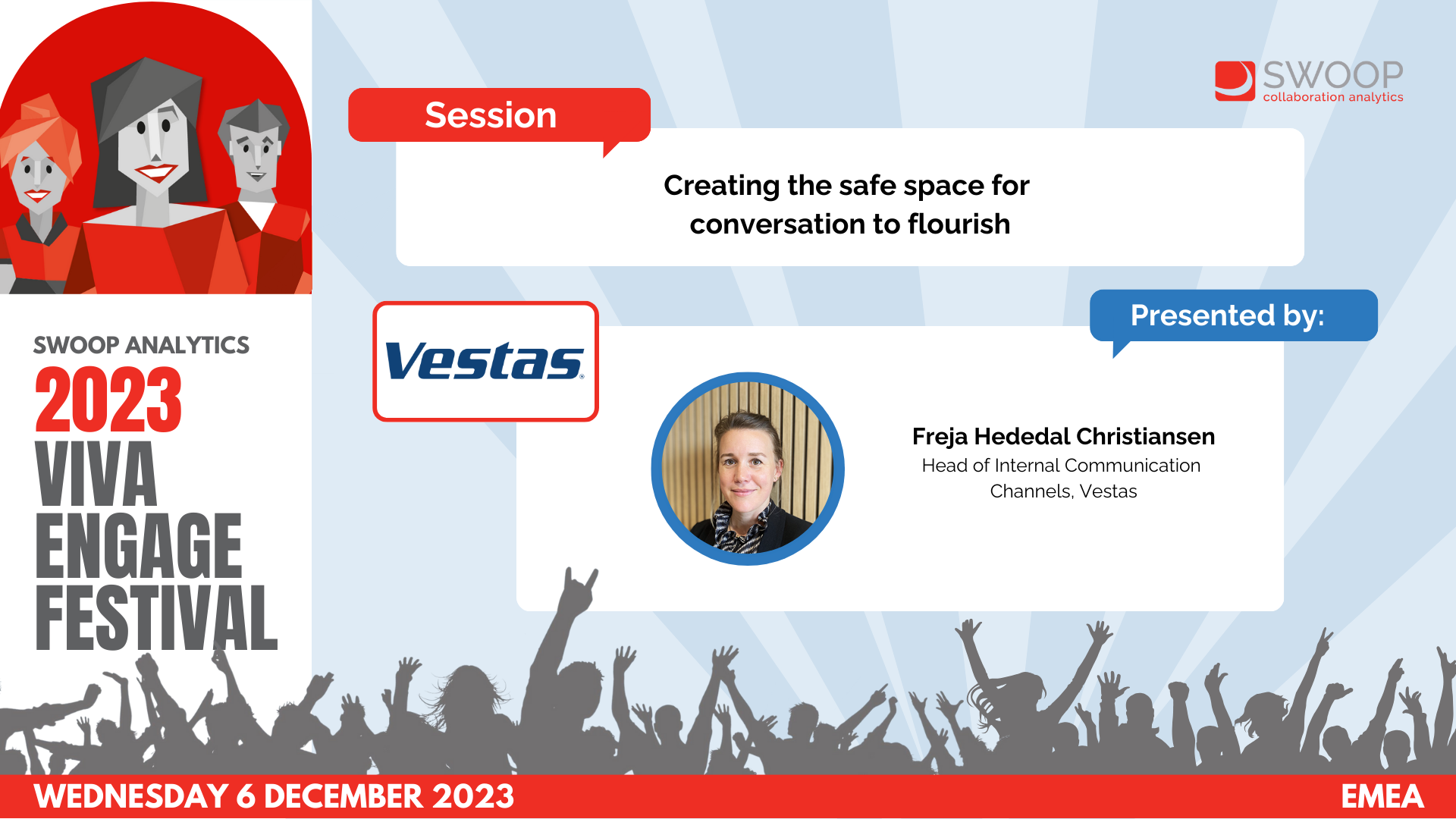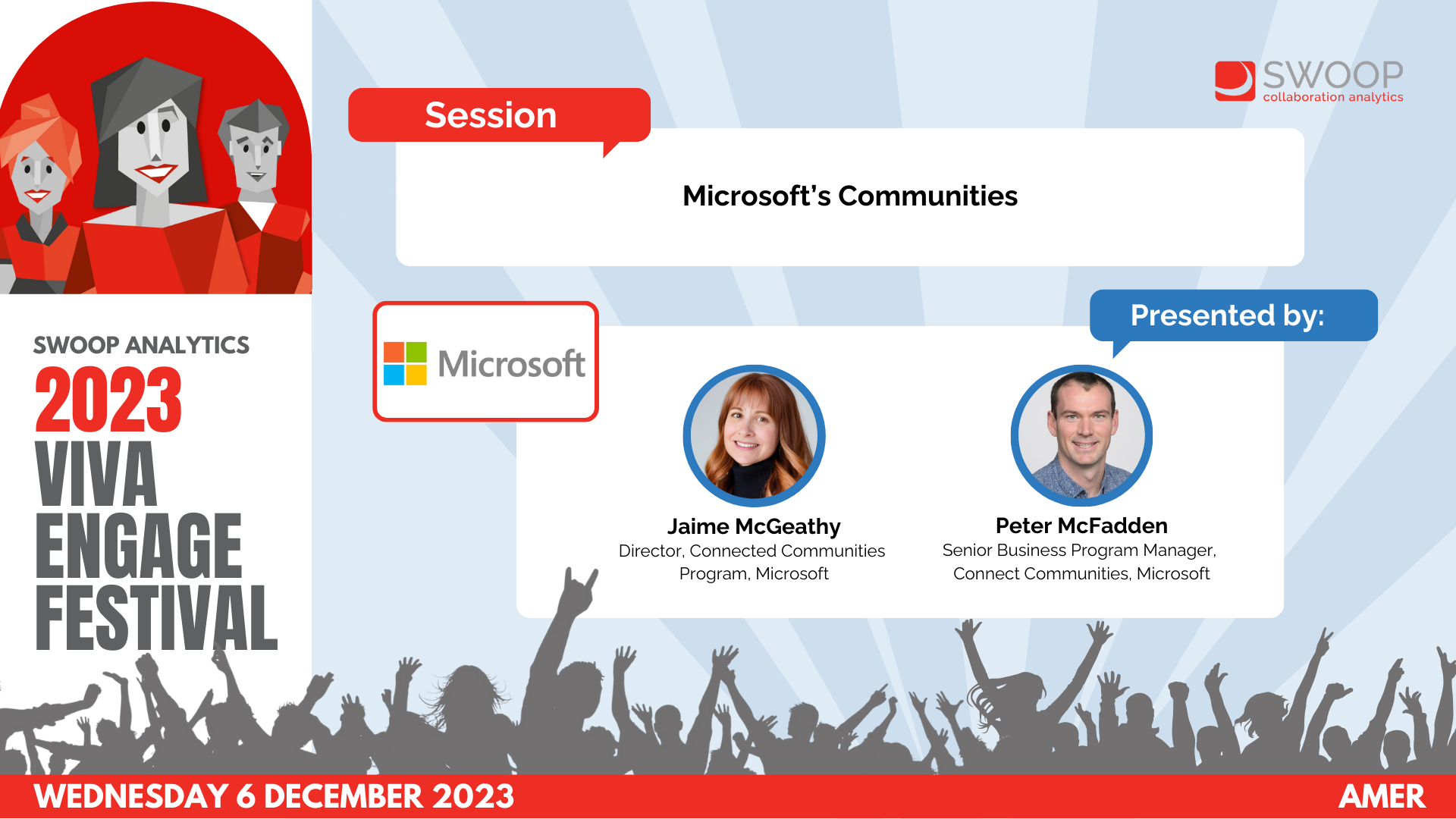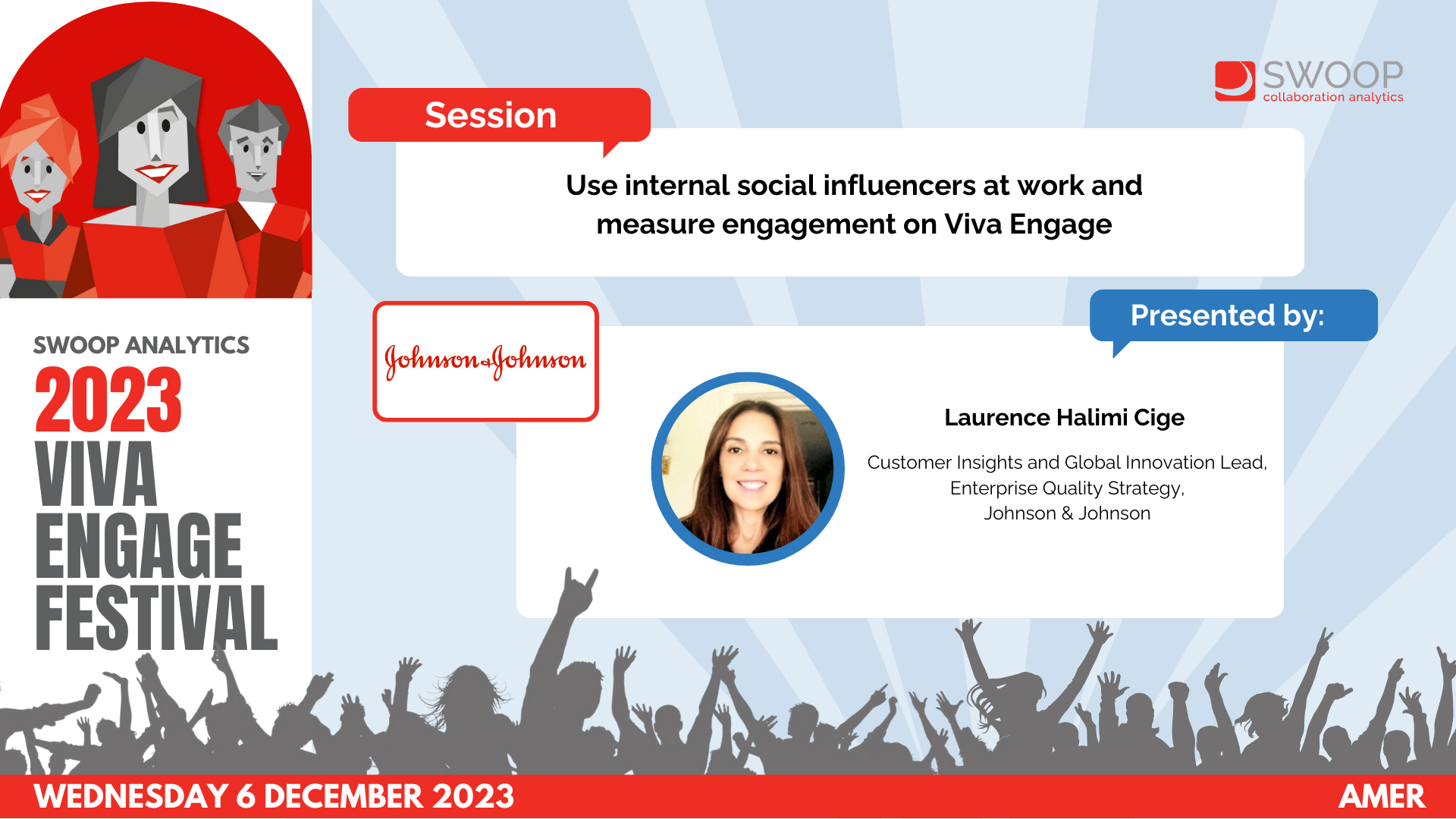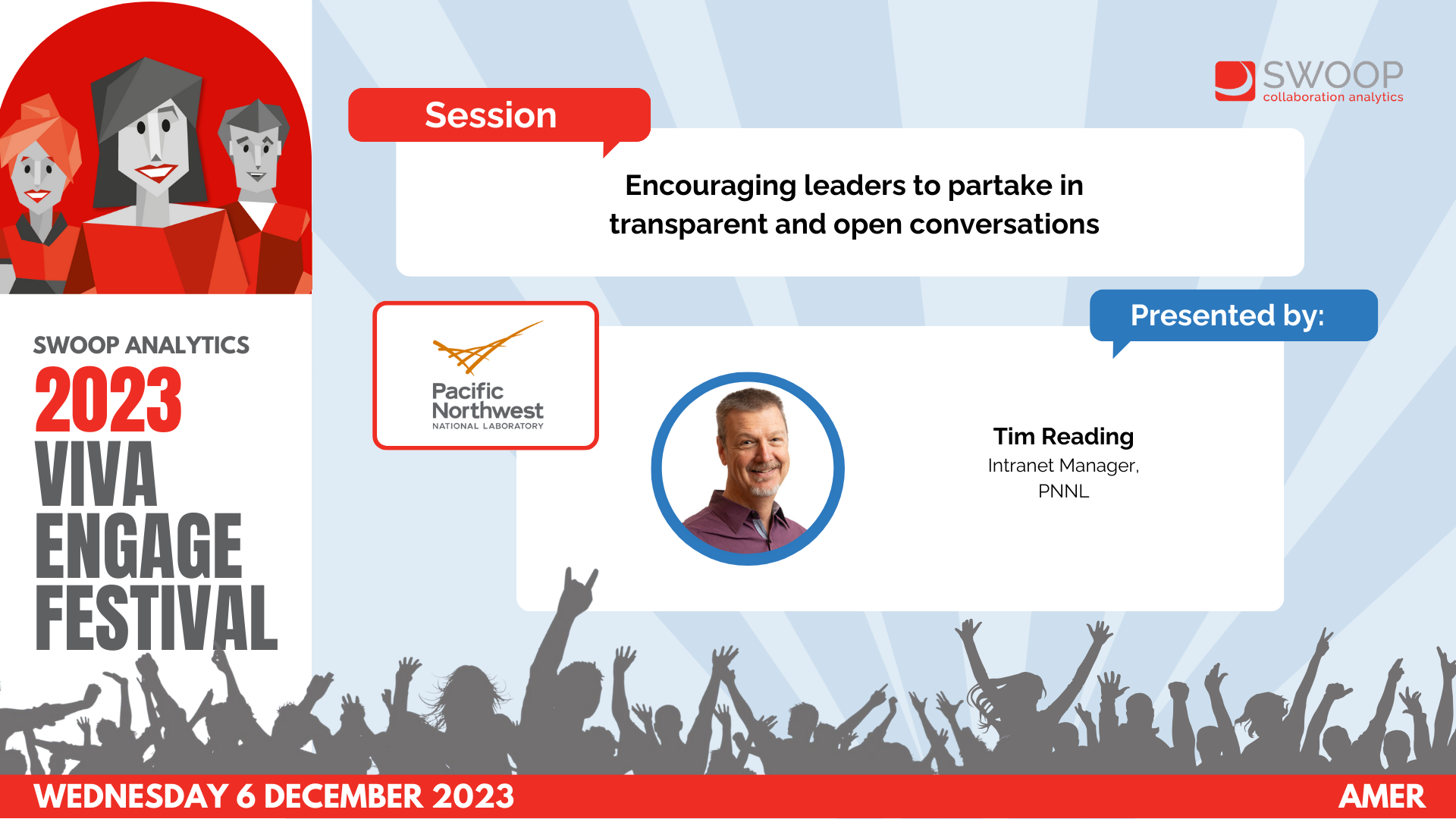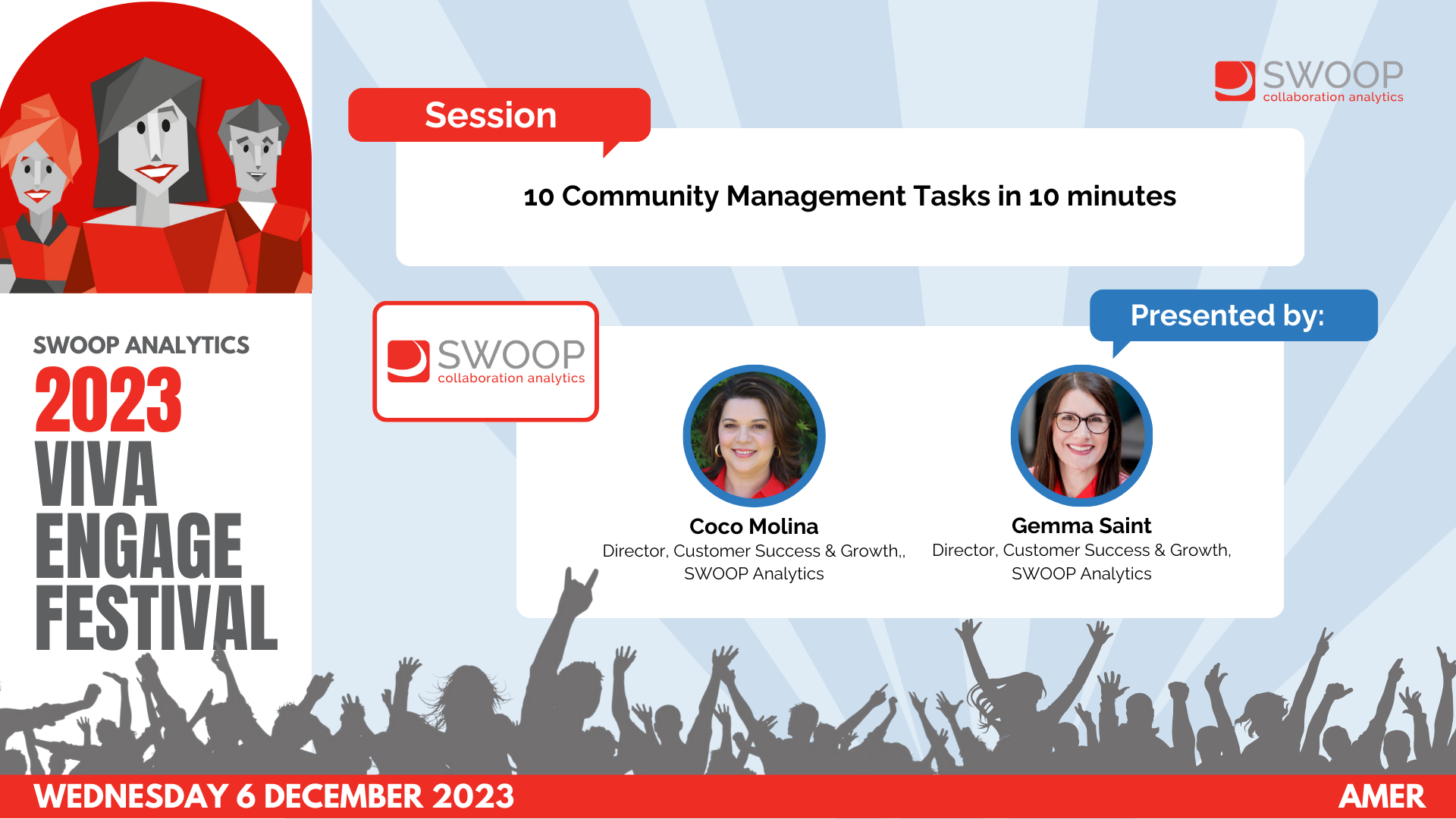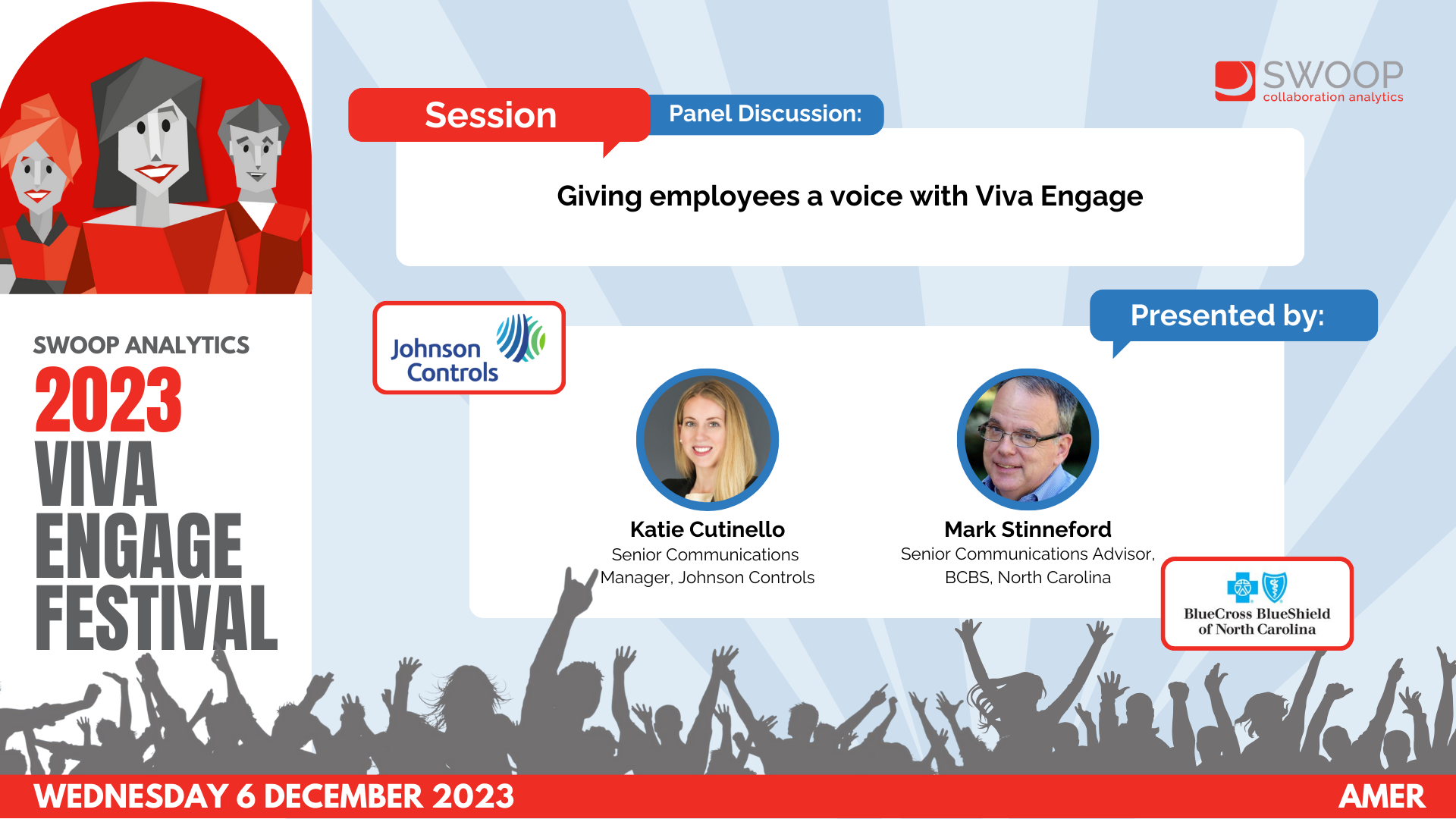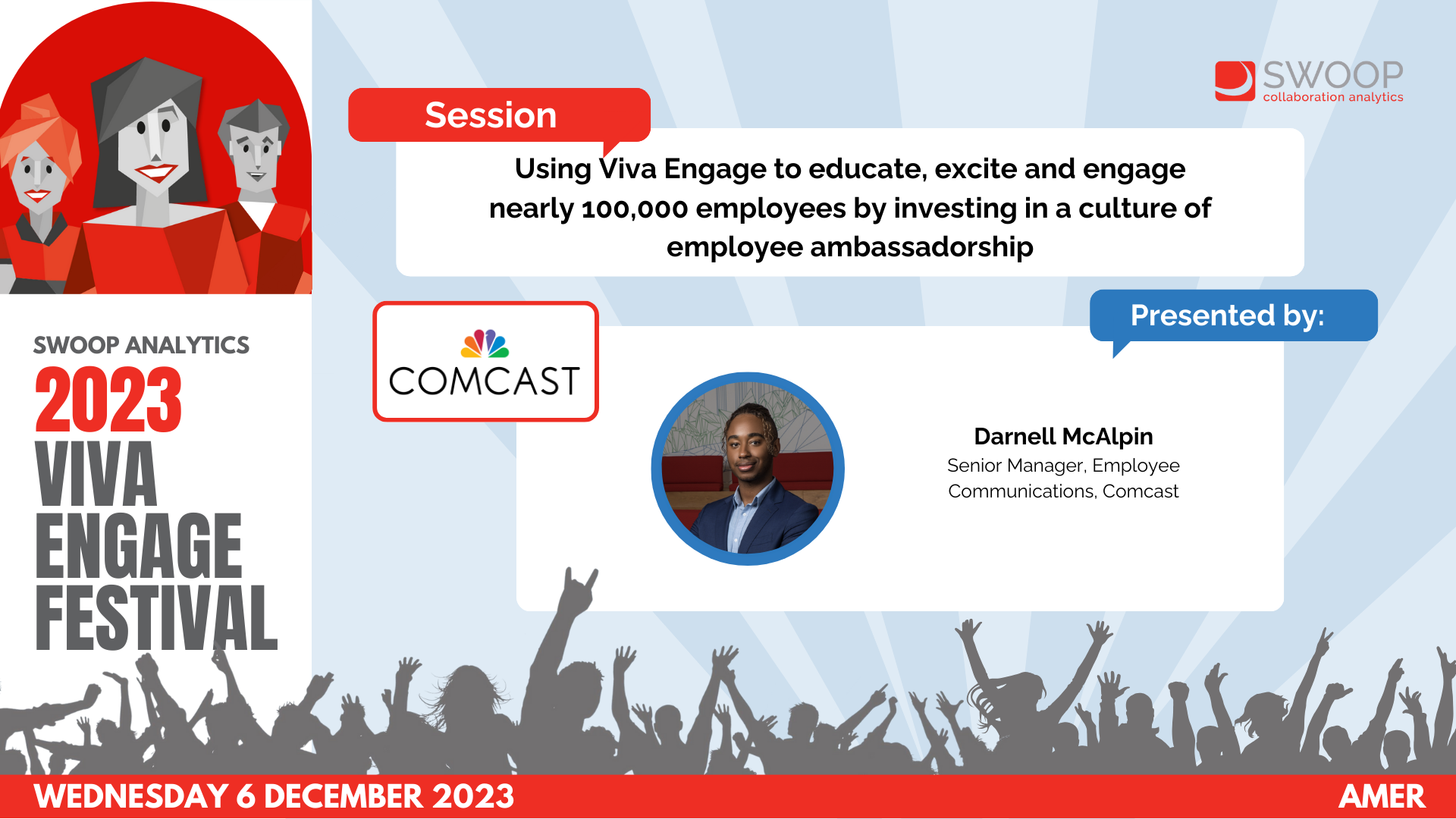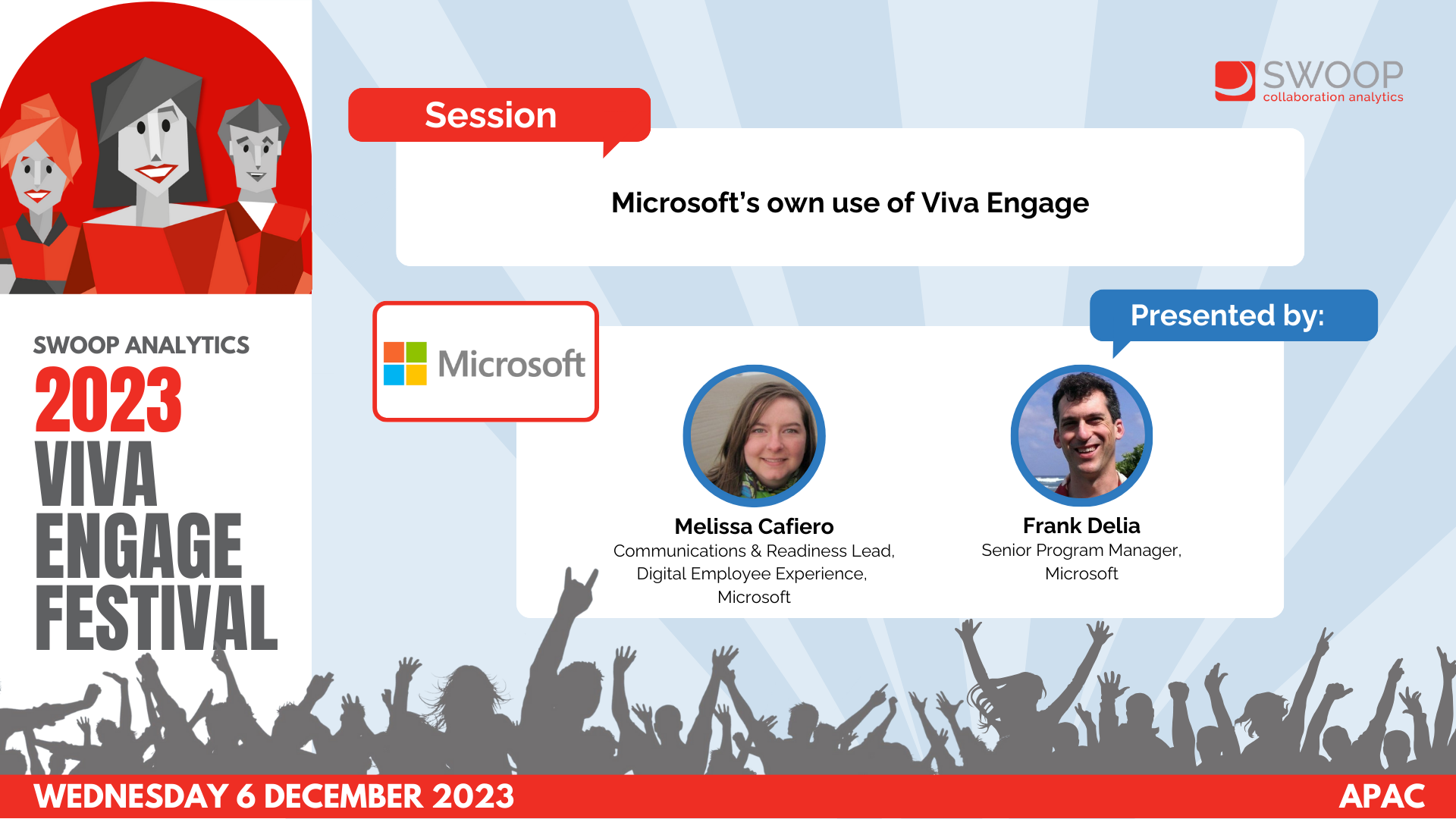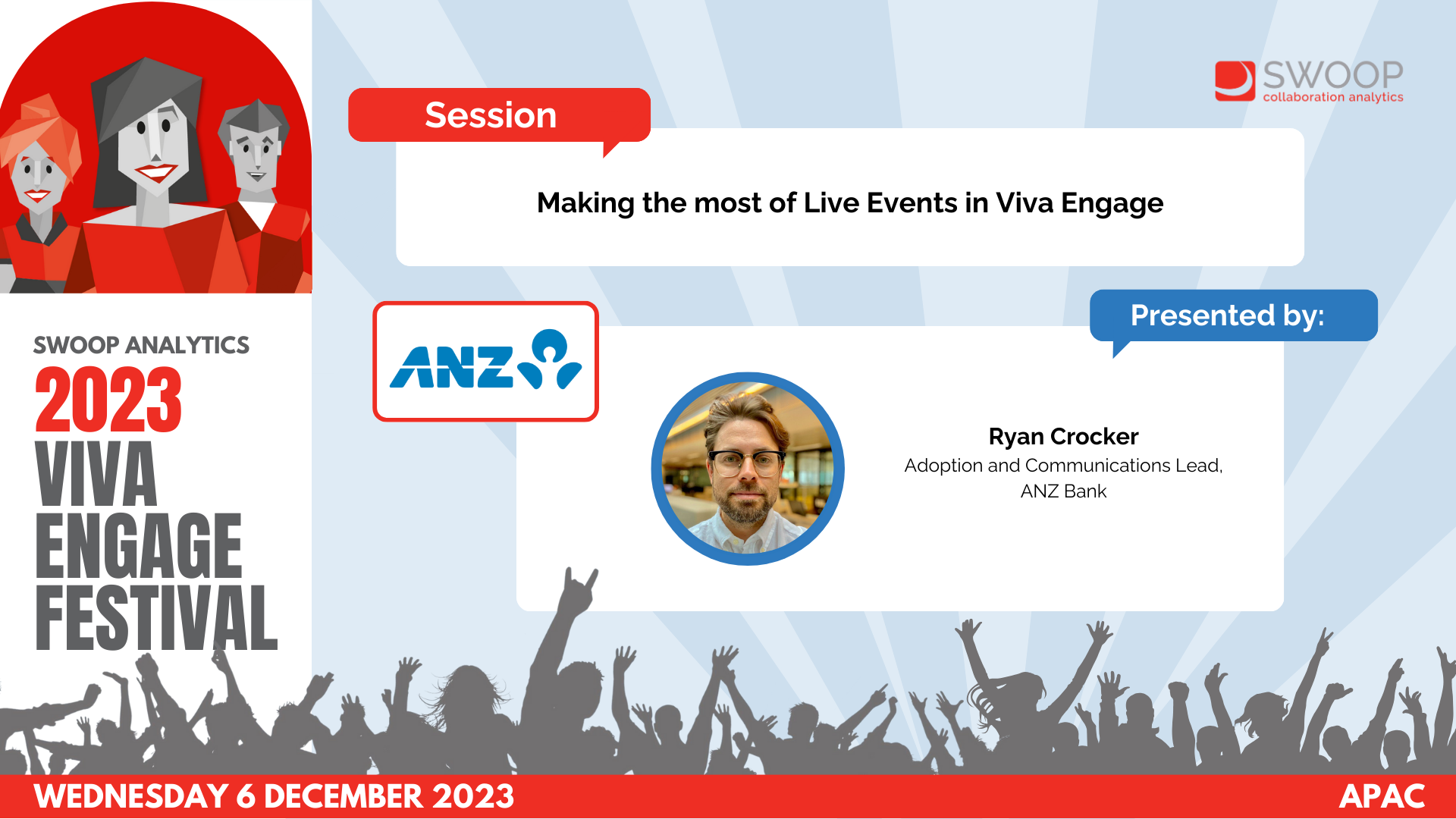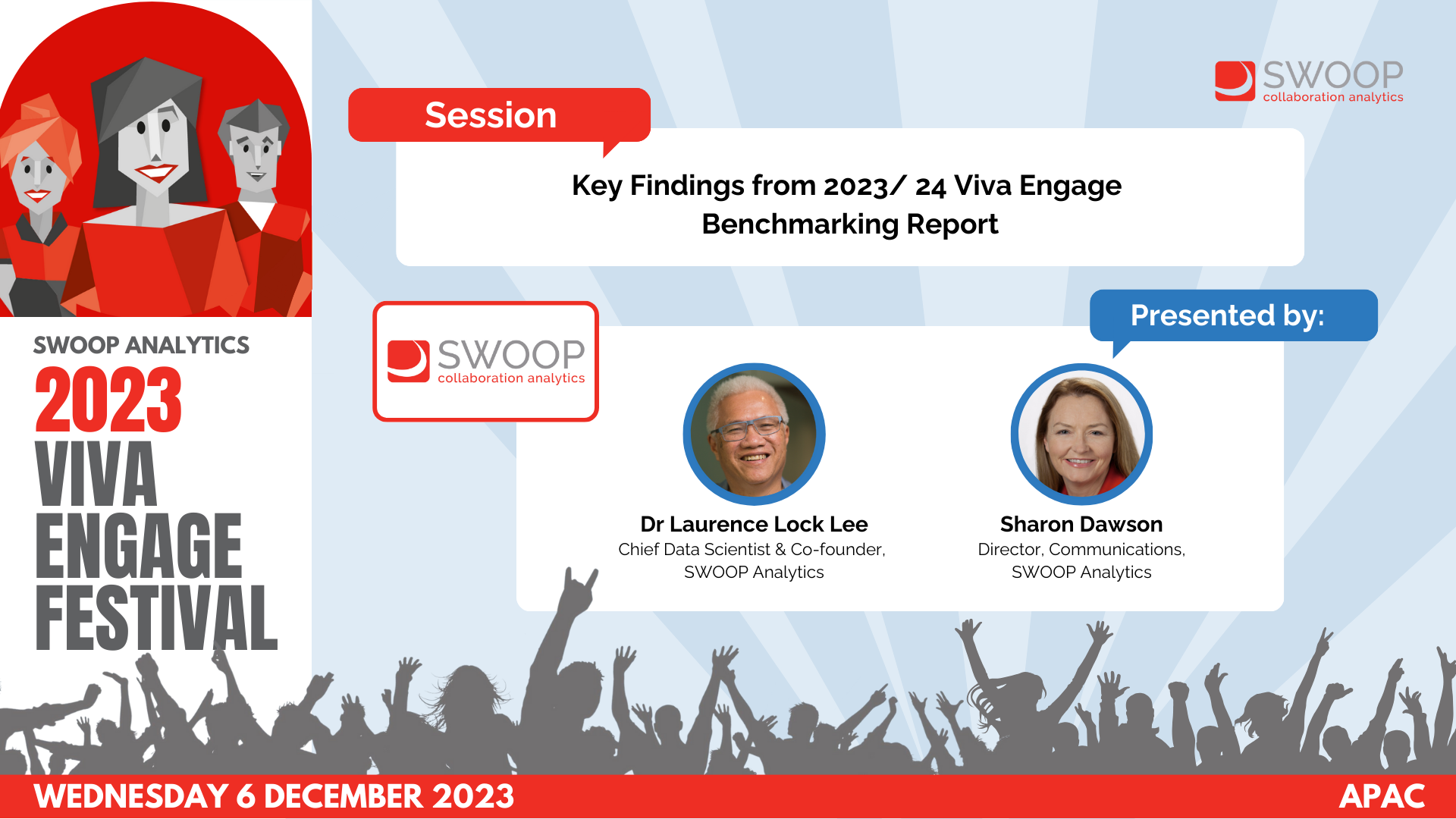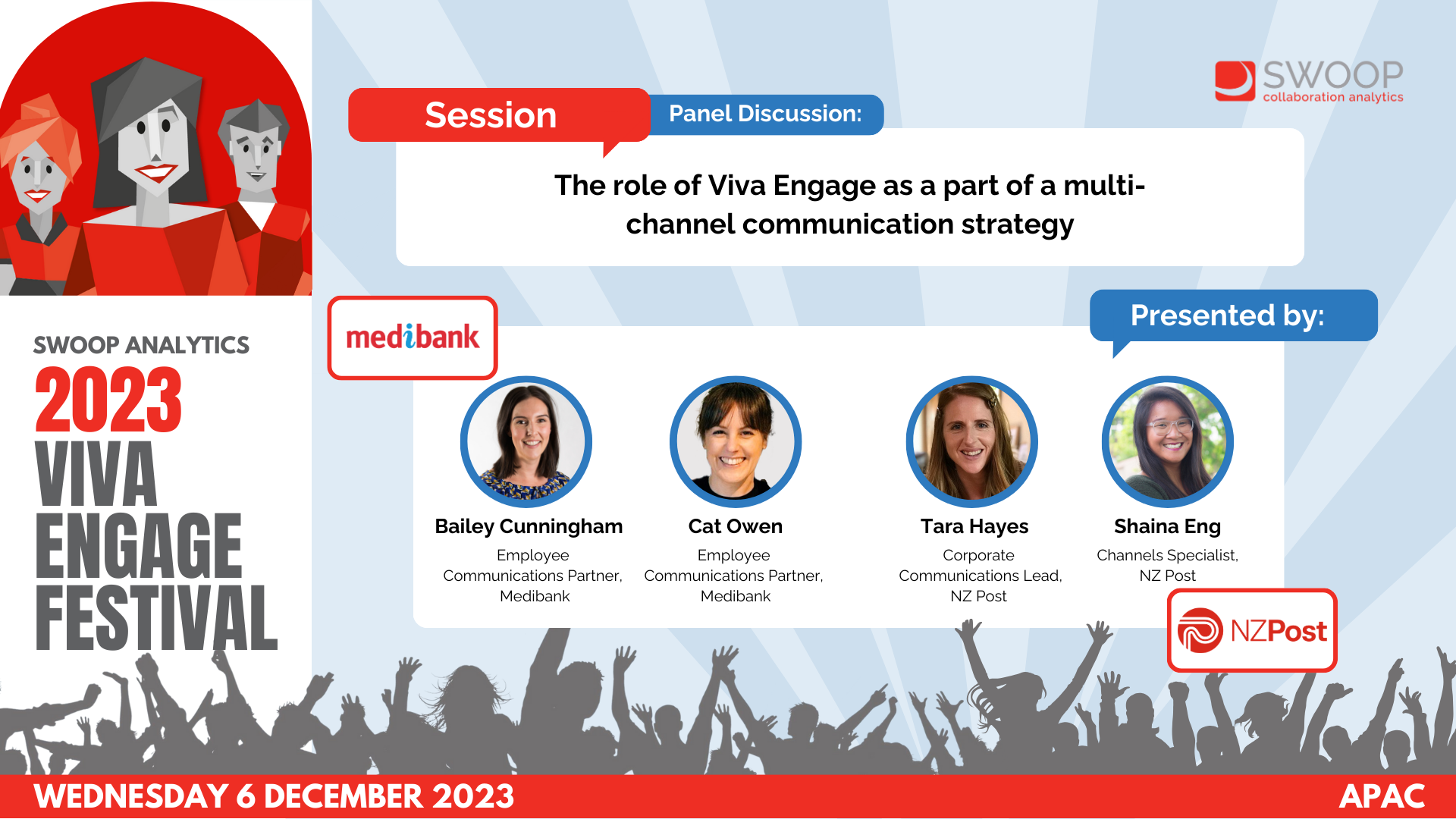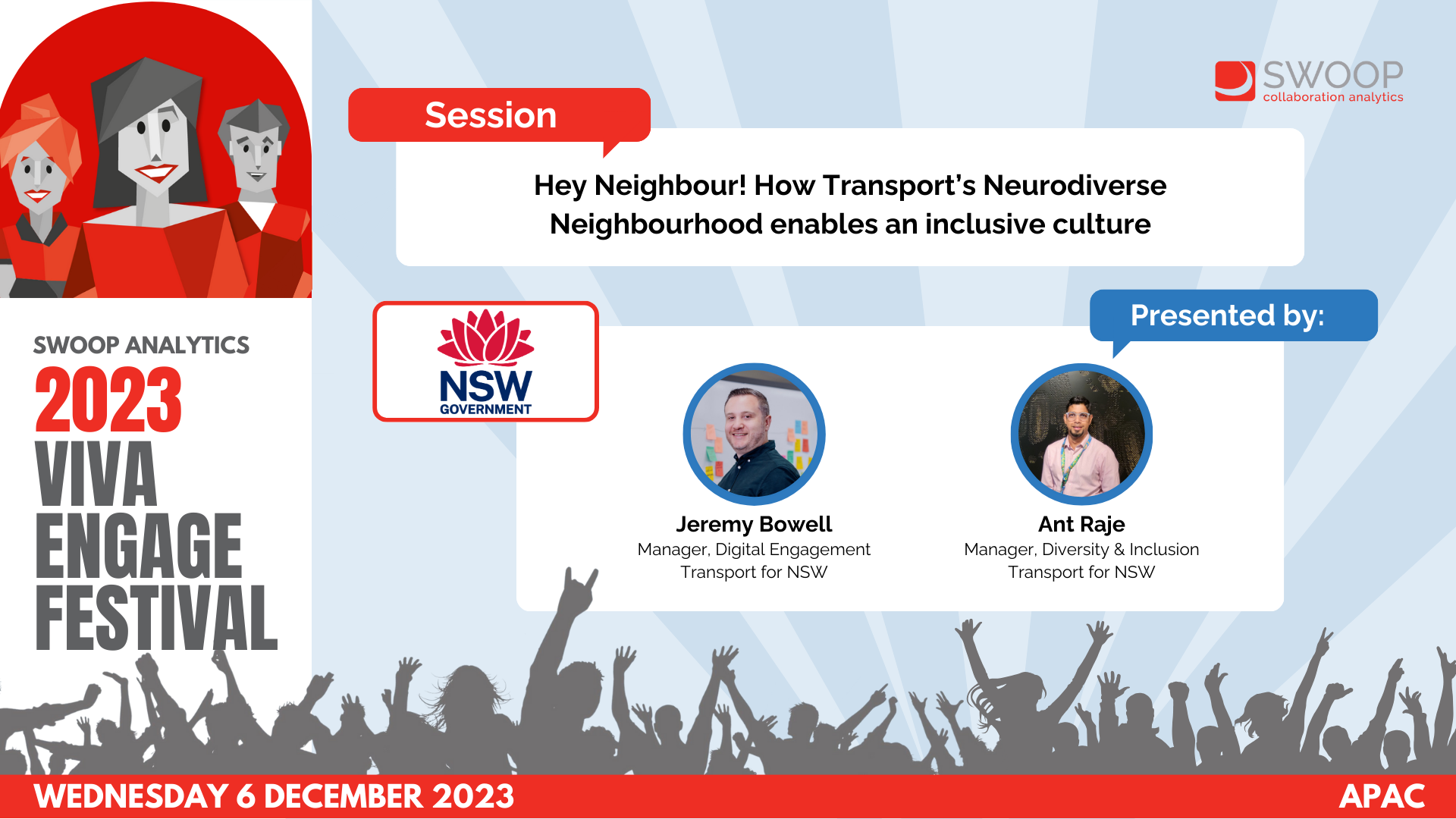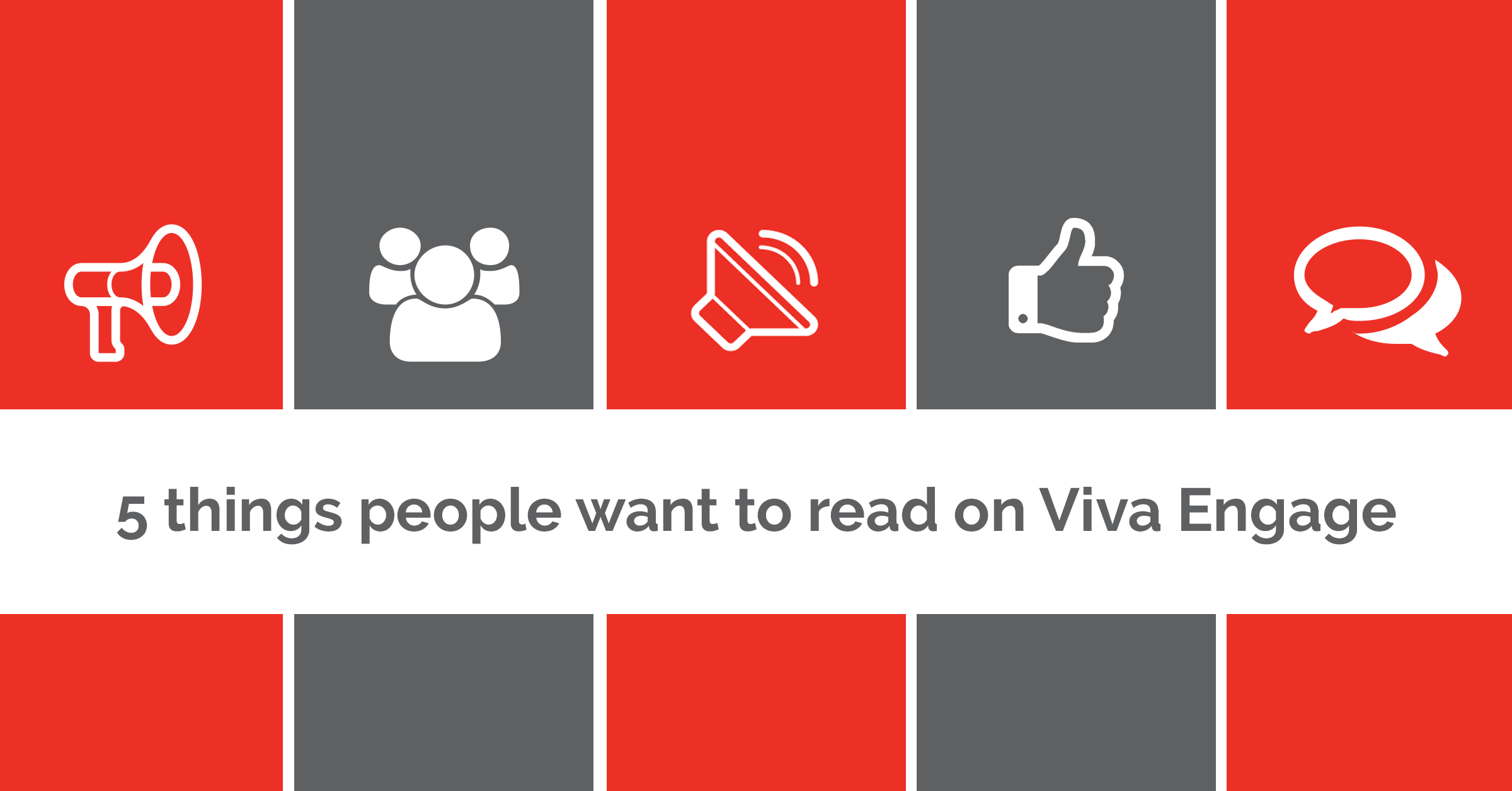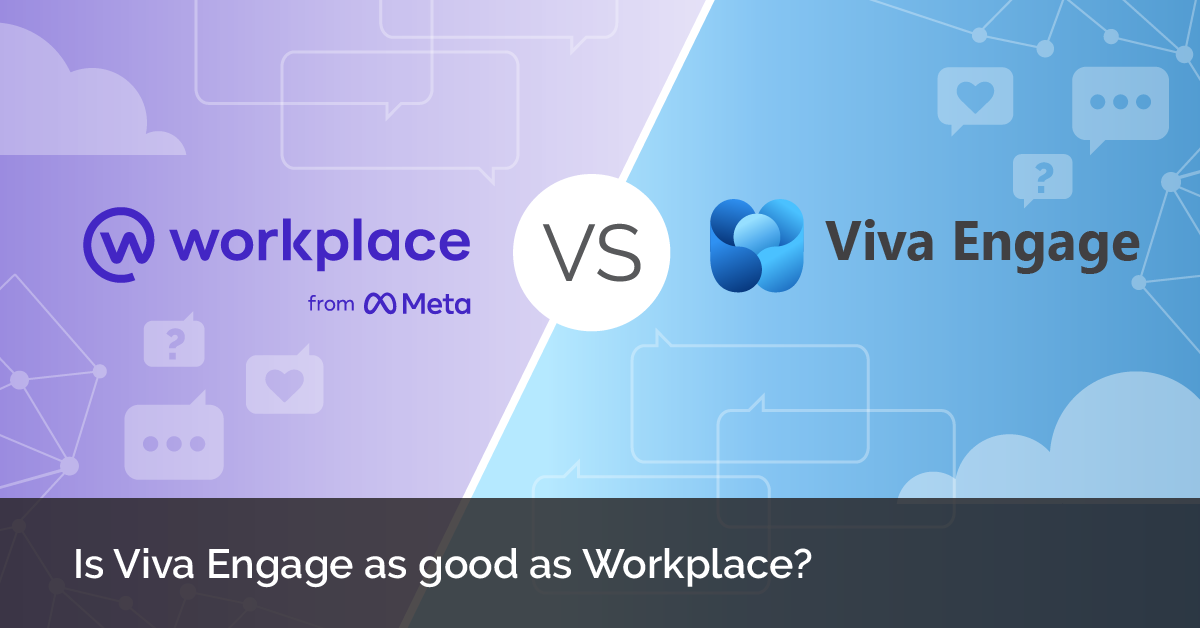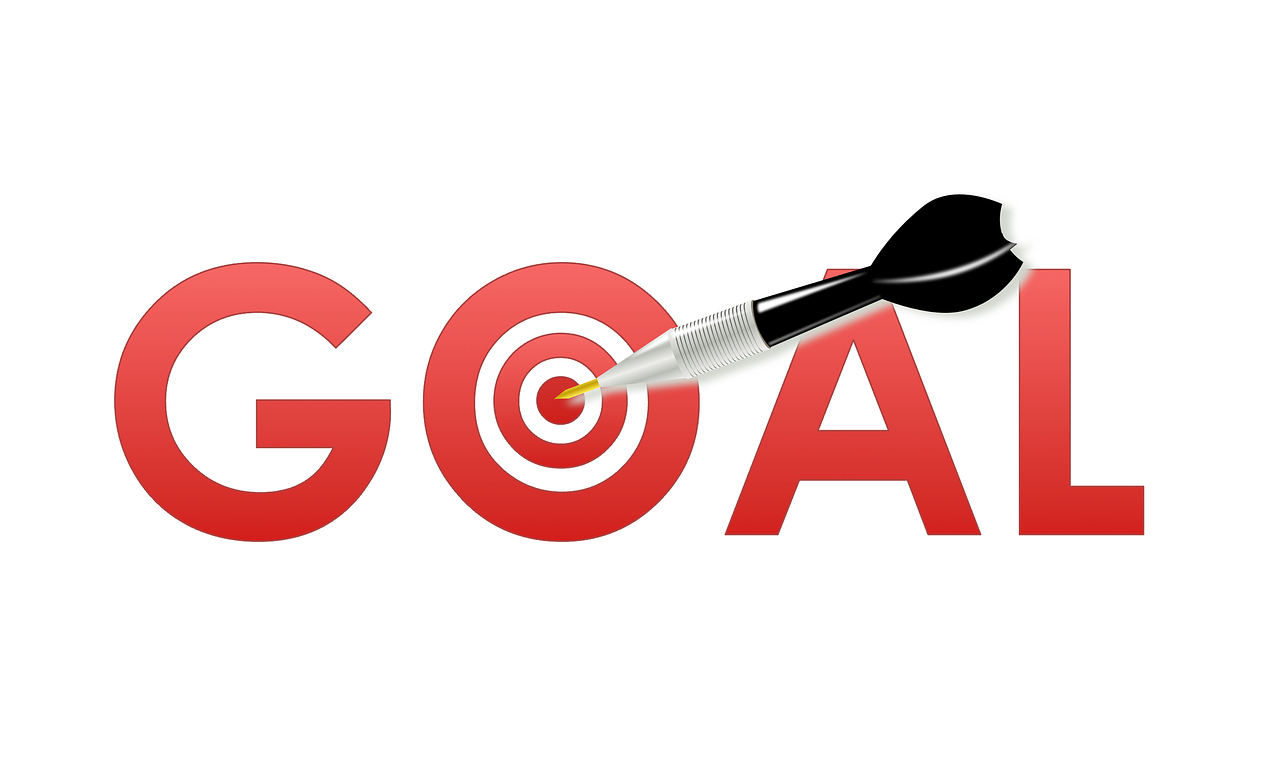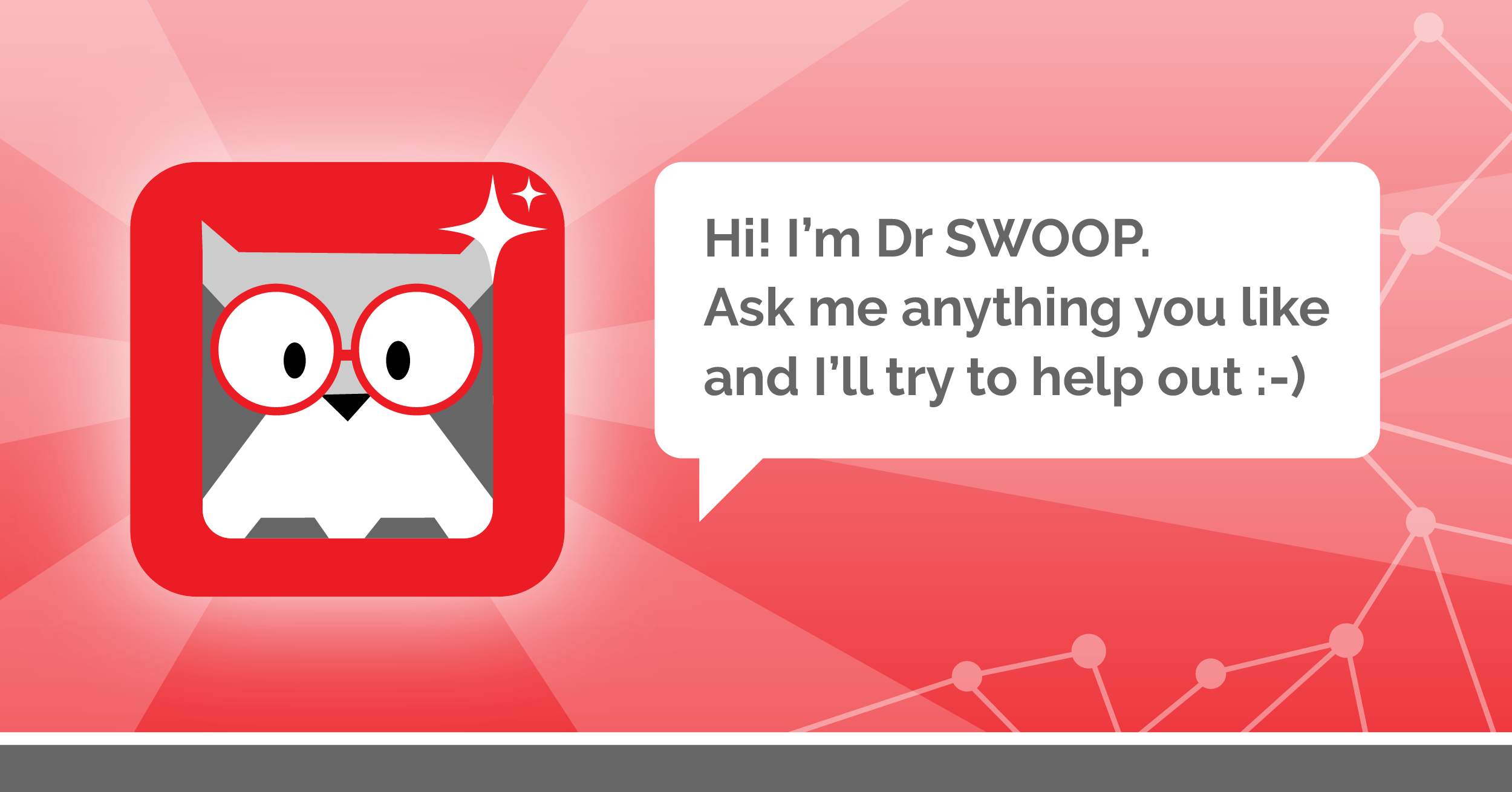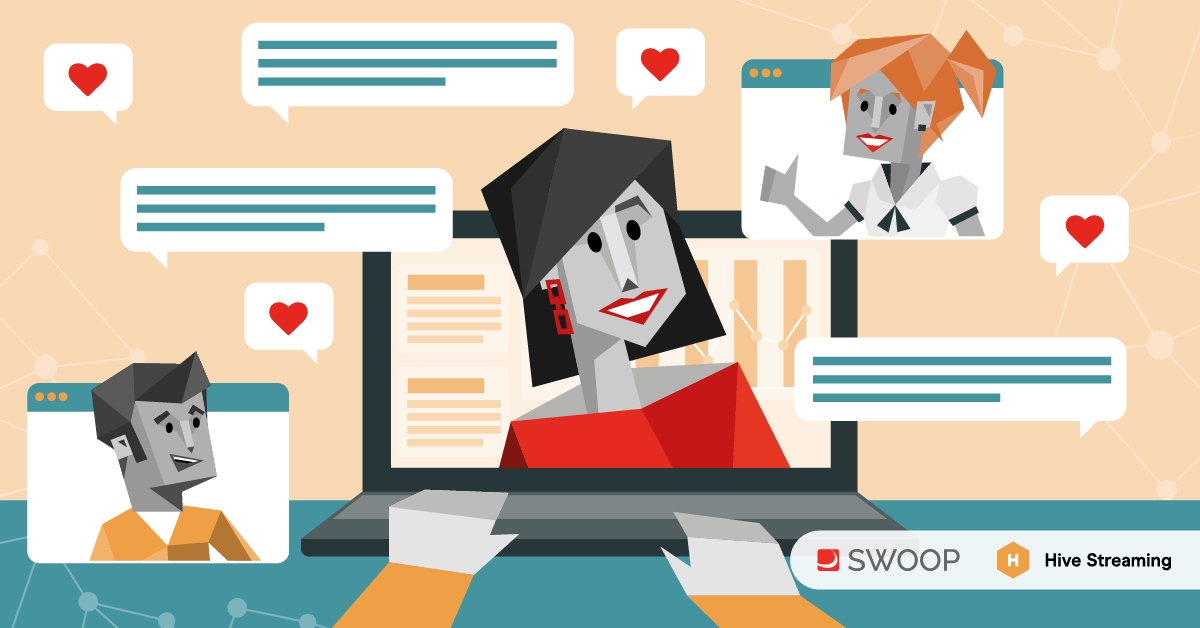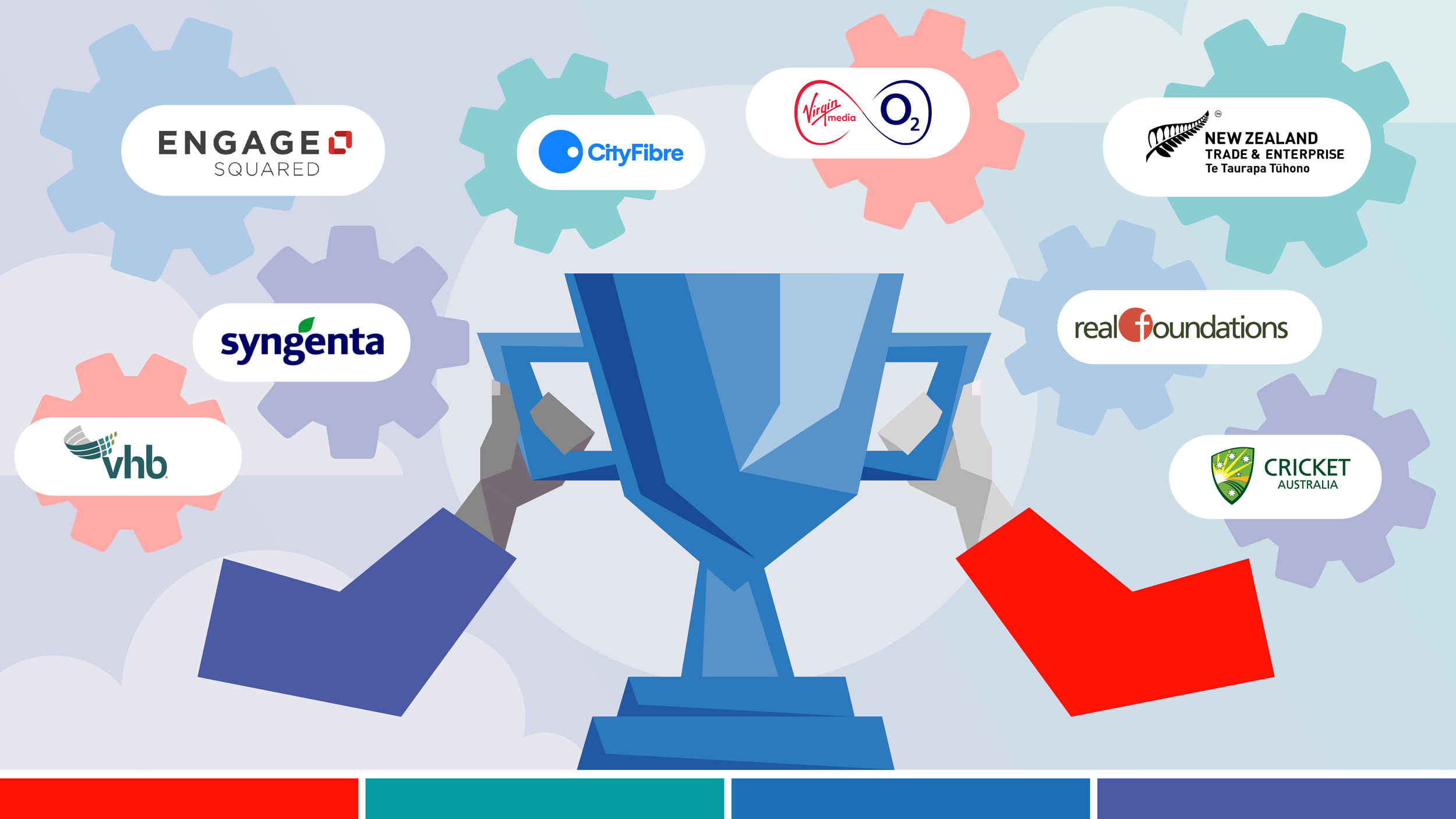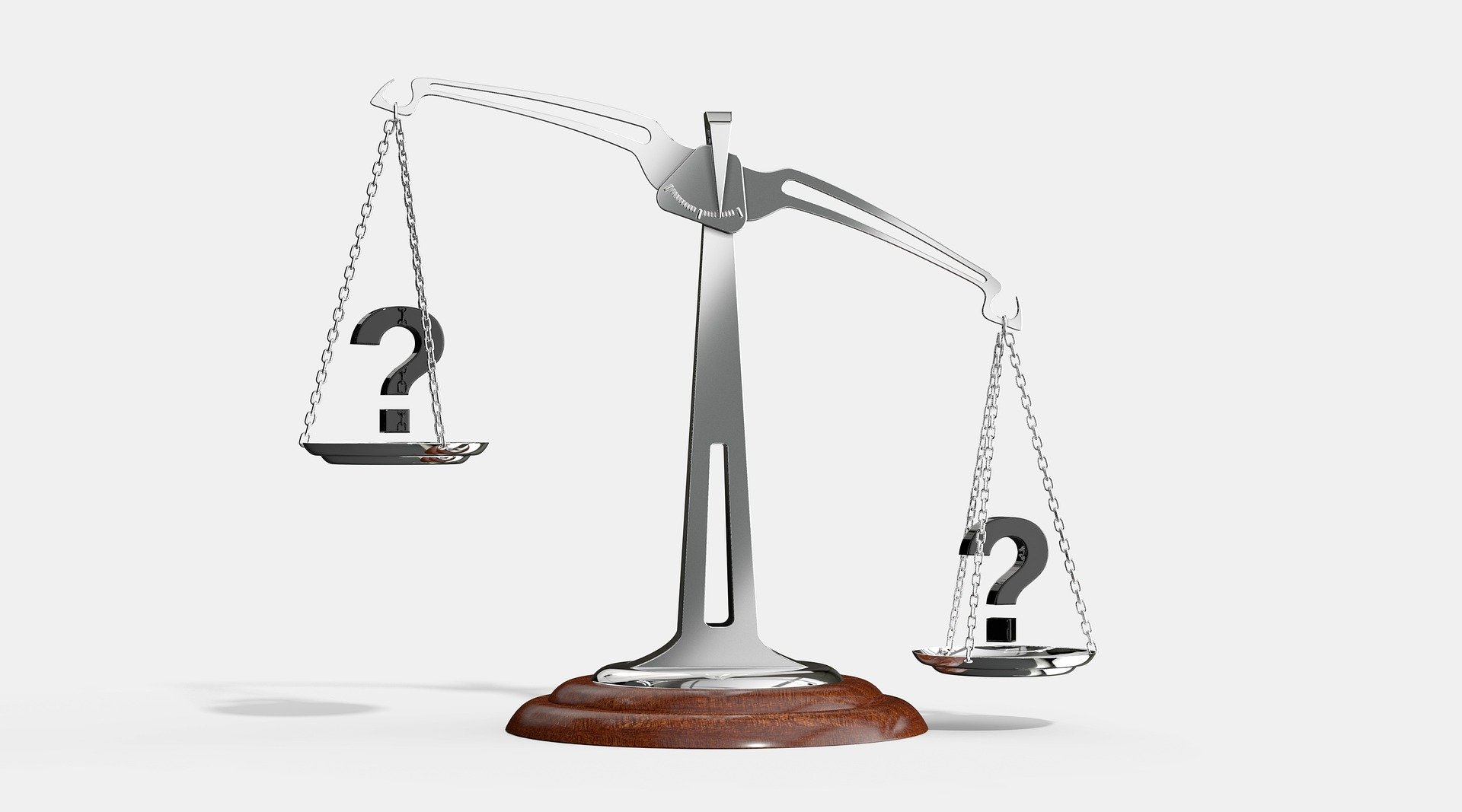Microsoft: How experimentation and consistency moved our leaders from absent to visible
EMEA | Viva Engage Festival 2023
Join Jon Bates, an Executive and Employee Communications leader at Microsoft as he shares his learnings and experiments on developing leadership visibility, employee advocacy and ultimately, brand love for Microsoft and it's mission.
-
I want to introduce now John, who those of you that were here earlier for the announcement of the Community Champion of the Year Award will recognize John's smiling face. John Bates from Microsoft is our final speaker for today. I'm super pumped about John's talk because for one key reason, John's going to talk about experimentation.
I don't want to say too much more than that, but anyone who knows me knows experimentation is a key part of my obsessions. It's really cool to have Microsoft sharing a story of how they do Viva Engage as well, because, you know, you look at Microsoft, you go, well, it's their product, so obviously they do everything perfectly. But you know what? No one has all the answers, really.
It's about giving things a go. On that note, I'll stop talking because I'll give away too much, but I'll hand over to you, John. Thank you so much for joining us.
And yeah, please fire away with your presentation. Thank you. And this should be an interesting experiment doing this just before lunch or during lunch for some people.
So hopefully I can keep you for that. Can I just, is everyone seeing my slides, hearing, seeing me OK? Wonderful. I'm getting nods, so thank you.
So hello. Great to see you folks again. I'll do an introduction.
My name is John, and I've got the privilege of working in employee and executive communication here at Microsoft. It's been super interesting hearing and seeing the work of this community and how all of you are using Viva Engage. And today I was hoping to add some more perspective for you to ponder by taking you through a bit of a first person perspective about someone who, to be honest, I was a sceptical user of Viva Engage when I first started using it, you know.
But today I'm using it every day to drive really impactful and influential, I hope anyway, employee communications. So whether you're really early in your journey using this tool or perhaps someone who's just looking for some new perspective on how to use it within the Microsoft ecosystem, hopefully there's something here for you to take away. I should be about 15 minutes and hopefully we should have some time for questions at the end, and I will of course keep an eye on Q&A and chat as well if we don't manage to reach you.
So before we talk about where we are now, I thought I would talk a little bit where I've come from, and I've used Microsoft Designer to help. For those of you who aren't familiar with Microsoft Designer, if you just head to bing.com forward slash create, it is a image creator which you can use using prompts. But back to the tool, unfortunately when I put in my prompt it came up with this, and I looked nothing like this back in my 20s, but I was definitely frustrated in the same way that these folks are here, because my first job was cold calling telephone research in the events industry.
Now my role was to find out what senior executives, so pretty much everyone on this call, it was my job to call you up and say you know what is it within the marketing space, social media space, communication space that you were interested in, and I would use that information to write conference agendas for the events like we're doing today. So I spent about five years or so in this role before I started my first comms gig with Virgin Media, and whilst I've done a few other roles since then, there was one lesson that stuck with me during this period, and that was all about consumer centricity. Our friends in marketing, when we go and talk to them, they are constantly being challenged over you know the ROI of what they're doing, are the tools they're using on trend, is the content they're doing on trend, and that's something that really stuck with me when I started my communications career proper, and to understand the story around experimentation and what I'm going to talk about today, I'd love you to keep the same question in mind, which is how can we make employee communications be as close as it can to the expectations that we have as consumers.
So let's skip forward to today. I joined Microsoft in January of 2023, and I was immediately blown away by the strong sense of purpose. Our Microsoft mission, which I'm sure you would have seen everywhere, explored any of our products, which is to empower every person and every organization on the planet to achieve more.
Now Microsoft is a huge organization, you know 200,000 people, you know when I first saw that number when I joined I was a little overwhelmed, and there are communications people in all parts of the business. Now the role that I started in, and still am in now, was employee and executive communications for the headquarters function of our sales and marketing business in Western Europe, which covers 10 or so countries. So within my patch there are about 6,000 people working across those 10 countries, across 19 solution plays from modern work to cloud to sustainability and security, and on top of that every country within the area has their own communications team, their own country plans, their own priorities.
It's a really complex, fast-moving business. And back in January, perhaps unsurprising to everyone on this call, AI was really kicking off as the topic that everyone in every business was talking about, especially at Microsoft. And the conversation we were having with customers was how do we get people to not just adopt Microsoft Cloud, but then really use it to embrace AI transformation.
So my role in all of this was I had to figure out what the heck I was doing, and how I could really make Microsoft's mission come to life in this context. Fortunately, I wasn't alone in figuring all of this out. We've got a world-class communications team here at Microsoft, and they shared these priorities with me and with the rest of the communications function, and they've really served as my north star in how I would set up this layer of employee and executive communications.
And it also made me ask some really tough questions about how I would achieve them. So now I have this knowledge of what the business was talking to customers about, and I had knowledge of what the priorities that the business expected of communications, I started looking at channels. Now at Microsoft, we've got a lot of tools, and it was a little bit overwhelming.
You know, I had the option of building a SharePoint site, play with Viva Connections, spin up a Teams channel, focus on LinkedIn, create a newsletter, or I could just do a ton of town halls. And from today's presentations, there are definitely things I'm going to take ideas from everyone else that's done stuff here within that ecosystem, so thank you for that. But the problem I had was back in January, is I'd immediately come from a tech stack based on Google, Slack, Workplace for Matter.
Now, sorry to Microsoft, but I'm sure everyone would agree, those are all great tools, really user-centric. But I just wanted to share that little tidbit, because I wanted to reiterate that I didn't come into this role with knowledge of how great the tools are, how great they are when you integrate them and you put in things like SWOOP and use all the features in there. So I had to learn from scratch what the Microsoft stack was, and also learn, you know, apply that to what the business was trying to achieve.
I quickly found myself looking at Viva Engage. I knew it could give me scale. I knew it could help me meet people where they were already and having these great conversations.
I also knew that there were a ton of features. It also felt like, thinking about that consumer experience question, the closest to how I experienced content outside of work, you know, browsing LinkedIn, looking at Instagram, TikTok, it was that social media experience that I wanted to try and replicate internally. John? Yes.
Just, sorry to interrupt, Jess, we've just got a couple of comments coming in that some people have got, seems like your slides have frozen for people, they can hear you fine. Can I ask you to stop sharing and re-share your slides perhaps? Yeah. Last speaker of the day, we've made it this far without any technology.
Sorry to interrupt your flow. That's all right. I was going to say the slides are working okay for, it seems as some people it's working okay for and some it's frozen for.
Yeah, I'll do it the old-fashioned way. I was using the fancy Teams features. Here we go.
Right, I'm not going to see cameras for a little bit, so apologies, I will come turn it on again in a moment. Right, how is that? You can see perfectly. Okay, so I think priorities was the last one, right? Yeah.
Okay, for those of you who couldn't see this, sorry about that. Essentially what we have on screen here is the priorities that I was asked to do as a communications professional, which are all around culture, mission and strategy, and trying to enable pride and advocacy. So, after getting all those priorities, I just simply started experimenting with Beaver Engage to figure it all out.
And you know, I really started simple. It was literally stuff like, what does this announcement button do? Does it reach everyone? Yes. Boom, 60, 70% of people being reached in just a couple of hours.
Amazing. Could I get people to share content on LinkedIn? Do they care? Will they do it? And the answer was also yes. The right content, I could get people sharing the amazing stuff that they were doing with pride.
And I was getting around, you know, I was just putting in a link to say, hey, our exec has done a story on this. Can you just go to it and reshare LinkedIn? And we started getting 10 to 20 reshares per piece of content. That's free marketing.
No one spent any money on that. And that was a really interesting experiment. The third, what's this storylines thing? You know, how is it different to communities and the posts that we're doing there? Does it actually reach people? Now, this was a bit more of a complex one, trying to figure out the tools.
I quickly learned that, you know, by adding an audience or using storyline announcements behind these posts, I could reach people in a really unique way that was different to communities. And I simply fell in love with it, because it allowed me to help share the voice of the leader whilst allowing that community, as I saw anyway, and there are lots of different ways of doing this. I saw those community spaces as almost like those town squares where anyone could have a conversation.
And I didn't want it to feel like the leader was just popping up in there and using it as their personal channel. We've got storylines for that. But at the same time, you know, I was honest with myself and started thinking about the drawbacks.
Like, can this amount of announcements feel overwhelming? Like, when do you actually do employee advocacy? Obviously, you can't do it on every piece of content, but where can we have the most impact when we do that? And, you know, would normal people get what storylines was trying to do? I also did some other experiments with different content types. Was it GIFs? Was it videos that would get clicked? My finding, we'd love to hear other views, was that it was GIFs that were the MVP. Videos just weren't getting watched within that kind of scrolling kind of experience, which I think is remarkably consistent with what we're seeing on platforms like TikTok, LinkedIn, Instagram.
Like, it's got to be short. It's that nine seconds to one minute or so if you want to get someone to read something. And sometimes a GIF is just so much quicker at getting across the points that you want to make.
Comments and engagement. Like, sometimes it is really hard to get conversation going, especially in these all-company, all-country kind of groups. So I started experimenting with what is it can actually get people commenting and getting that two-way conversation going.
And for us, it was all about celebration. Has someone achieved something amazing? How can I highlight that? So I started doing posts. And all of my posts, I use the people tagging feature.
I always make it about account executive has done this amazing thing with this customer rather than, you know, the voice of Microsoft telling you that it's about this amazing thing. AI, of course, as well, being the Zeitgeist topic that it is, also started to generate more comments than other posts. And the final Viva Engaged learning that I took was, while experimenting, was to keep looking at analytics.
You know, there are some super cool stuff in there. Themes, sentiment, where people were having conversations. And this was a really big help in helping me to know where I could bring focus to make more impact.
And it was this question around focus that made me really start to wonder how I was going to operationalize all of this. You know, I had a ton of experiments and evidence to show to stakeholders about why they should care about Viva Engaged, especially on the employee advocacy front. But I didn't yet have a way to know how to structure this day to day.
So what my manager and I came up with is what we came to call our influencer engagement model. Now, we knew from our experiments that we really wanted to double down on Viva Engaged as it had all the features and tools that we needed to create this as close as possible consumer grade experience. It was succeeding and energizing people.
It was keeping them informed. And it was also encouraging employee advocacy as well. And, you know, if we're honest with ourselves as a profession, I think that sometimes we can all feel like we're being pulled in many different directions.
And it's really hard to create consistency in that context, let alone innovate or really feel like you have the space to experiment or even just ideate on doing interesting bits of content. And at the same time, we also have this paradox, right? We know that enterprise social networks need to be invested in. Otherwise, they just wither and die on the vine.
I also didn't want to be writing posts for absolutely everyone. But I knew that I needed to role model and create momentum around the use of Viva Engaged as our primary communication channel. What this model does well does essentially is it maps to priorities and the people that I had to work with to communicate those priorities.
So that first column, all about visionaries, right? These are people who are in our senior leadership team, you know, specifically the area president for me and his immediate directs. They're strategic influences. So I knew that I would get a little bang for my buck by directly business partnering them, getting close to them, the things they wanted to talk about and using their storylines to talk about what the business wanted to do.
But then, you know, you can't use the area president of everything. And I didn't want this to just be a talking shop of the most senior people based on job title. So I went to priorities and these priorities were based on, you know, what is the business trying to achieve, as I mentioned before? And this were these were our people, our market leaders.
So, you know, not even the most senior marketers. They were just key influences within a topic. And these are people in AI, cloud security, modern work and sustainability.
Each of these people then give me a platform to continue talking about our priorities and do that in a consistent way. And I also have this other pillar, right? There's that random person who comes up to you and says, can I share the news about my event? We have this new well-being update going on or HR just want to talk about pensions or whatever. These are all stakeholders who have a stake in talking to our all employee audience.
But I knew as a team of one here, I couldn't directly manage all of them and try and, you know, take care of everyone's posts. So I decided to empower them, right? I gave them all the announcement button and I included them in this conversation about how we influence people within Western Europe and Microsoft. I gave them the editorial calendar.
I said, look, you need to go in these slots here if you want to go and reach people, because I didn't want to overwhelm people. I gave them advisory services when I could, the odd bit of proofreading, the odd bit of here's how you can structure a Viva Engage post and here's what we've learned about what gifts work well, et cetera. And this then gave me more of a holistic approach to how I would use Viva Engage as a channel and all of these voices within it.
And this is what it looked like in practice. So alongside this, as I mentioned, is an editorial calendar. It's just an Excel.
I have deliberately not over engineered it to keep it simple and make sure I was adhering to that principle of, you know, if you're going to do an announcement this week, try not to do more than two a day. And even then, that's not great. Try and keep it really consistent to the audience and overwhelm them with content as well.
And what I love about this model is it just brings to life how I should be focusing my time. It just stops me from running off in too many different directions. It gives me a consistent set of stakeholders to reach out to for a varied set of stories and themes aligned to our priorities.
And importantly, it keeps these visible. I also think it's more consistent with what we experience as consumers. When you're on LinkedIn or Instagram, you've got influencers that you regularly follow.
You know, our Western Europe audience now has the same experience. And just as an aside, I try as much as possible to get scale. I encourage the visionaries and the experts in particular to think about how the posts we create together can also be used on LinkedIn.
So what they then do is you get a bit of an external benefit where it is appropriate. This also gives them more scale. It gives them more of an interest in sharing content internally and externally, which if you've got a bit of a challenge in convincing these people to do that really helps in making the business case for why it's worth investing that time.
And here's where we are now. These are valency metrics. You should always go a level deeper, look at personas, look at the different types of engagement that you've heard about today and you are all talking about in your presentations.
But as a valency metric, you know, we know that storylines reach people. We know that people can go to Viva Engage and they will actually go and share stories about it, which, you know, we've spent no marketing dollars on this. It's free advocacy, which is fantastic.
And you can manually do this yourselves. You don't need any fancy, power-B eye tools. Just put in a LinkedIn post from your CEO, put it in the Viva Engage post and say, please consider resharing my post and then just count the number of re-shares.
It is a little manual. If our product team are on the call, I would love a way to monetize that and make that easier for employee communicators. But there is a really great story here about how you can create this consumer grade experience of pushing out content consistently and then getting people to talk about it, which is then going to build brand love and advocacy for your brand and what it's trying to do.
And here's really what the lesson is about consumer grade as well. So consumer grade is all about experimentation and creating great content. If you're looking at this presentation today and you think there's something useful for you to take away from that, these are the four things that I would encourage you to think about.
You know, I'm a very big advocate of consumer grade internal comms, as I said, but it's always be careful of not jumping straight into tactics and channels there. Know the business first, know what it's trying to achieve. That helps you to identify the voices that you need to work with.
That gives you the space to experiment, even if they're really small experiments. Just start doing it. You know, sometimes asking for forgiveness is better than permission, but either way, just start small, build credibility, measure it, and that's what helps you go over those bigger projects.
That is it. I think we're around 11 minutes or so. I'm just going to come back to the presentation.
Thanks for the opportunity to share those learnings. Brilliant. As I said at the start, just fascinating to get a chance to hear from inside Microsoft and really appreciate a brilliant and insightful presentation.
Thank you so much. There's been a fair few things going on in the chat. Let me take a look in the Q&A.
I've popped a couple of questions in the Q&A. I think a lot of people might be a bit sort of like, oh, am I allowed to ask a question of someone from Microsoft? So I've taken the liberty of two burning questions I've had. I'll start with that.
While I'm asking these questions and John's providing an answer, if anyone out there has a question, whack it in the Q&A. If you've got a comment you want to share, whack it in the chat. One question that sprung to mind for me, John, was when you were in the first half of the presentation, you spoke about the experimentation you did and the different tactical things you tried and learned from.
When you were doing that experimentation, was there anything that really surprised you or any big fails that you learned from, or was it pretty much that you had a hypothesis, you tried something, oh, look, it worked? I love the big fails, so I'm going to do that first. The first actually was I really tried to do TikTok style short form video content, so like nine seconds or so. When I think about a channel like TikTok, the amazing part about it is that the algorithm allows you to discover content really quickly when you're scrolling.
So I just started trying to replicate that without the algorithm or the UX and just started doing these short videos within a storyline. I think people were just a little bit confused about what it was trying to do. I mean, sure, it got some initial engagement, which was nice, but again, tying content to priorities and what the business is trying to do rather than just posting content was it.
Also, just a wider learning on video too. I still do. I think we all need to as like using Viva Engage and SharePoint as a repository of knowledge is long form video just at the moment still isn't quite getting the watch, the views.
My hypothesis is maybe it's something to do with just the fact that we are all so overwhelmed with this digital debt, as we describe it at Microsoft, like there's so many digital signals going around the place. It's hard to actually force someone to sit down and watch an hour long video within that Viva Engage feed. So that was my biggest surprise.
A positive surprise was the announcement button, the storylines, right? People really do actually take it took off like allowing to reach people and have more space in that community was a really cool experiment. And I use that most days of the week. Nice.
I'm just taking a look at the chat. Yeah. OK.
The other question I had, sorry, I'm totally hogging the mic, was you mentioned at the start that you were a bit of a sceptic about Viva Engage when you before you joined Microsoft. How long would you say it took you to get on board with it and fall in love with it? I mean, obviously, as soon as Microsoft approached me, I was in love. And to be fair, it was pretty quick.
I mean, if I. Let's give some honesty, you know, a few years ago when we were as employee communicators, we're in this kind of comparison of, you know, Slack versus Yammer versus Workplace for Meta. You know, they all slack and Webmaster Meta. They had great user experience offerings.
But the thing that really won over me when I started playing with the tool and the user experience in Viva Engage, I think it does look great now, by the way, is that integration play. It's the fact that I can reach people where they are working. And I know I'm on a Microsoft call talking to people who are already converted, right? But as an outsider, it was someone that I could come in and say, oh, I get it.
I guess the fact that I'm in teams, I can reach people where they're working. I can make it go to people's Outlook if I want to. And for me was the real win.
Yeah, nice, nice. Can I ask any of the other SWOOPers on the call as any of the comments or the questions caught your eye? I've not been paying such diligent attention to it. I was enthralled by John's talk.
There's just one that came in from Julie. Given how crucial Viva Engage is for many organisations with worldwide workforces, especially because of the translation capabilities, we've found it incredibly difficult to generate reports on things like community activities, topics and etc. Are there any plans to address this with more user friendly Viva Engage reporting suits? Gosh, I might have to, if there are any Microsoft product people on the call, or is that a sweet question? Perhaps I might have to.
Well, yeah, my answer to that, Julie, is I'm here and happy to talk to you. We can do some incredible reporting. I think it's a really positive thing as well that Microsoft is really starting to offer more in terms of the reporting that's baked into the platform.
So that's fantastic. From my perspective, the more people that are doing more and better with analytics to really understand what they're doing, the better for everyone. But, you know, I'm here wearing the red SWOOP top.
So I'm going to go, if you want fantastic analytics, then we're here. We're here to talk to you, Julie. And I must say to everyone watching this, Julie's question there was not a plant to sort of wrap things up with a plug for SWOOP analytics.
But just on the translation side, you know, I'm seeing a customer zero anyway. I can now see Copilot within Viva Engage and the translation capabilities in there are fantastic. So hopefully with some of the, you know, the native tools, you've got to get some of the stuff you need.
Yeah, great, great point. Great point. This is a nice note to kind of finish on is that that great future opportunity that's coming in with Copilot.
But, John, thank you so much for sharing your story, or at least a piece of your story. I love your work, love your style.

